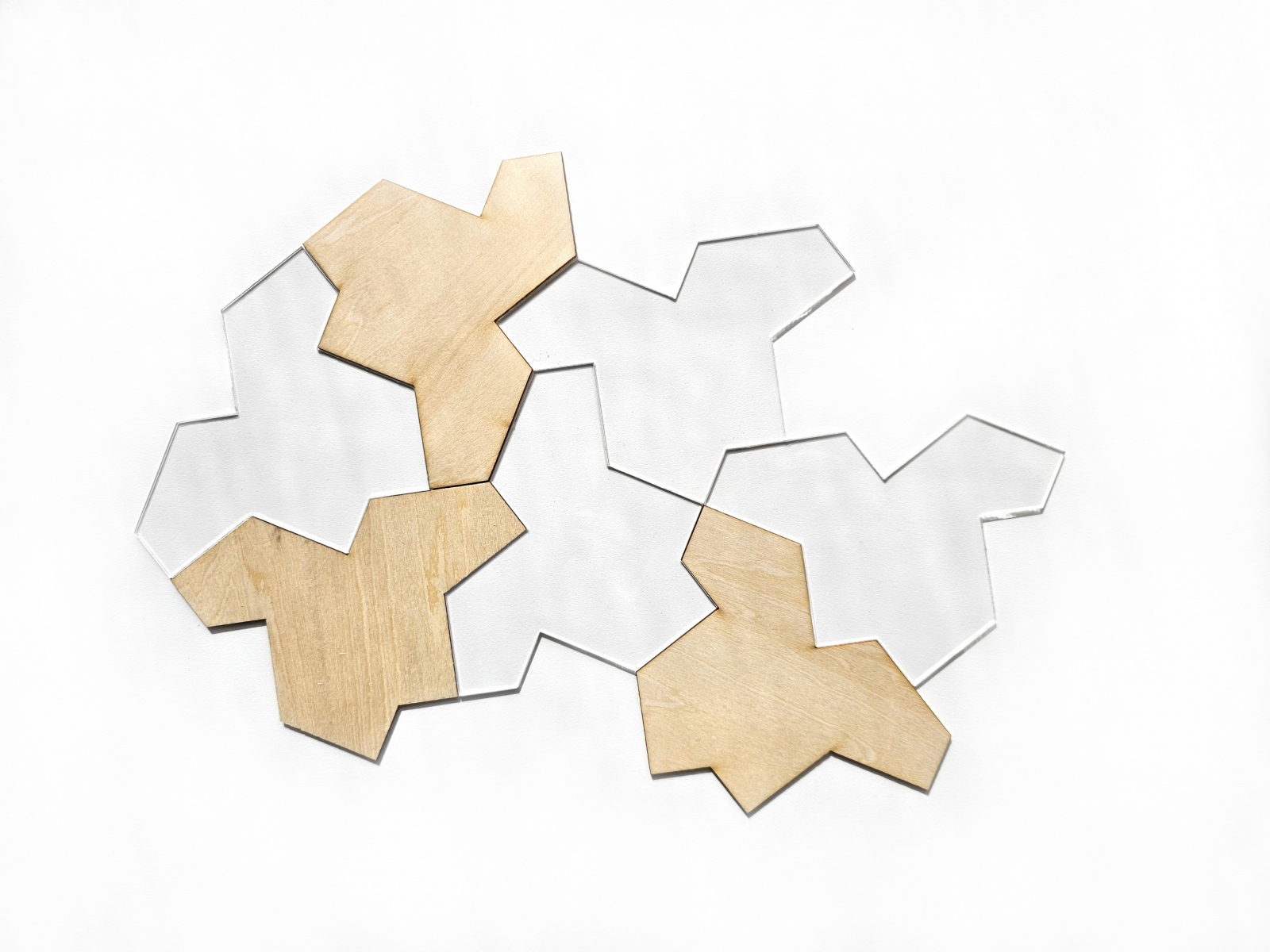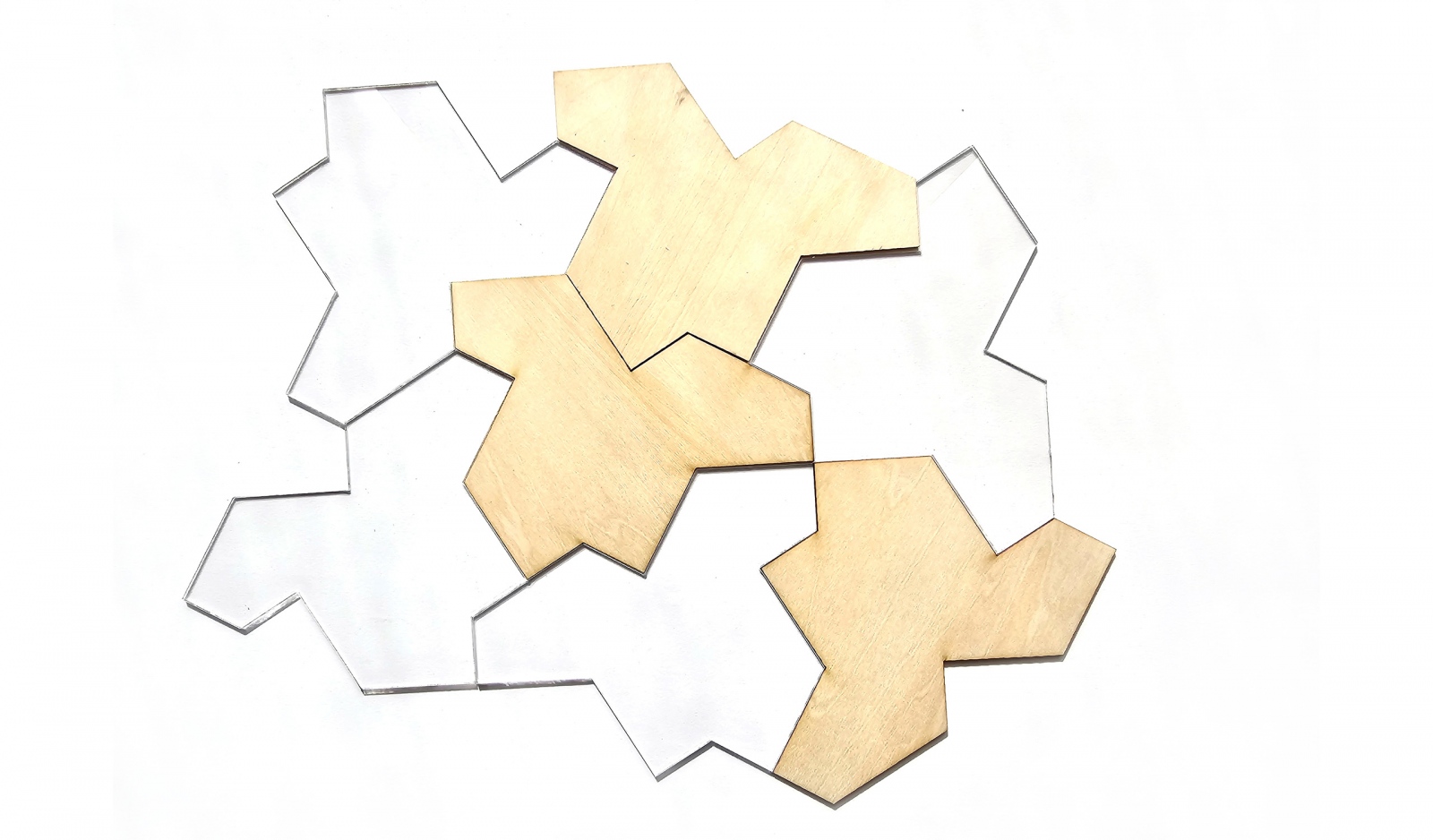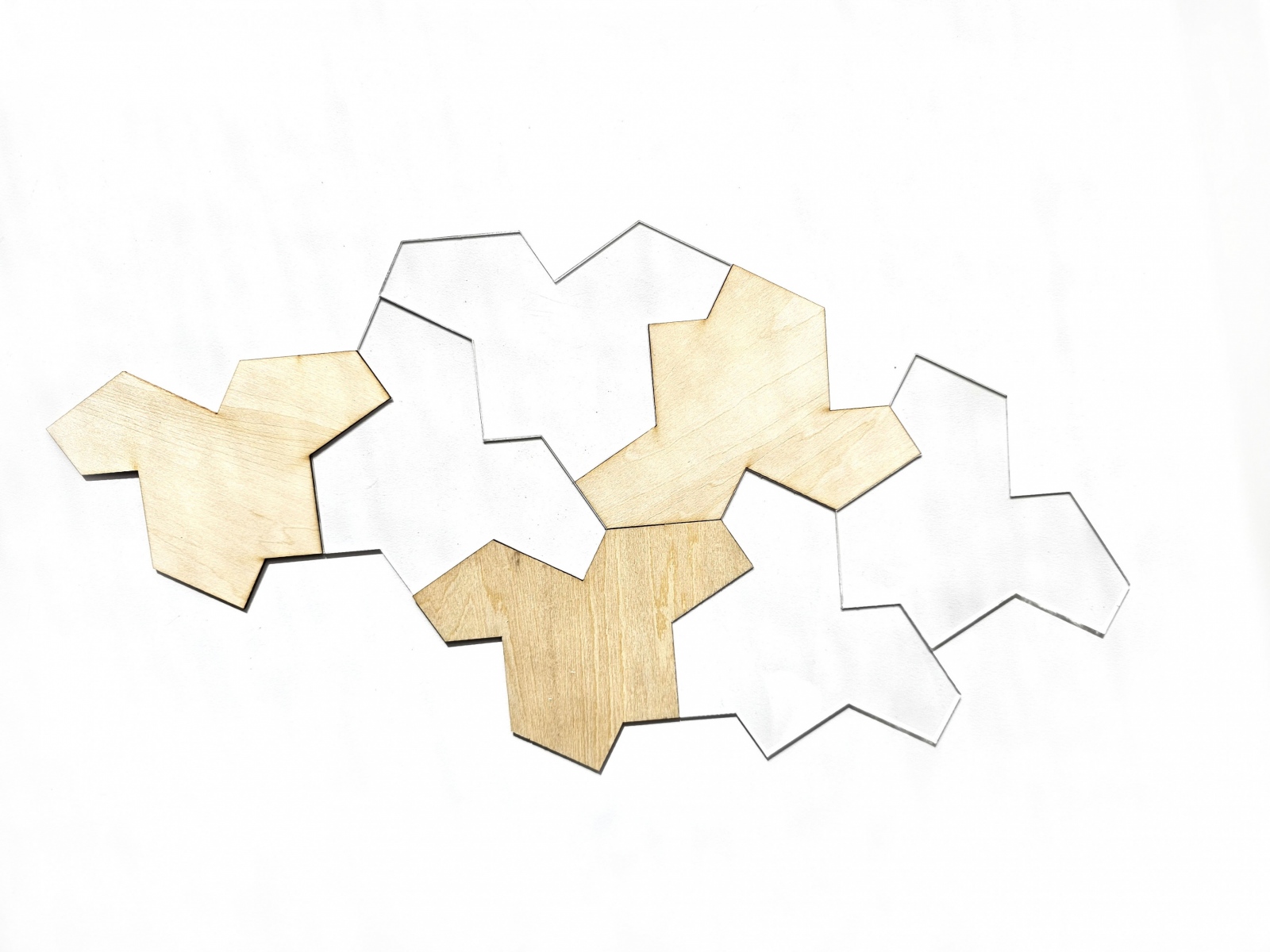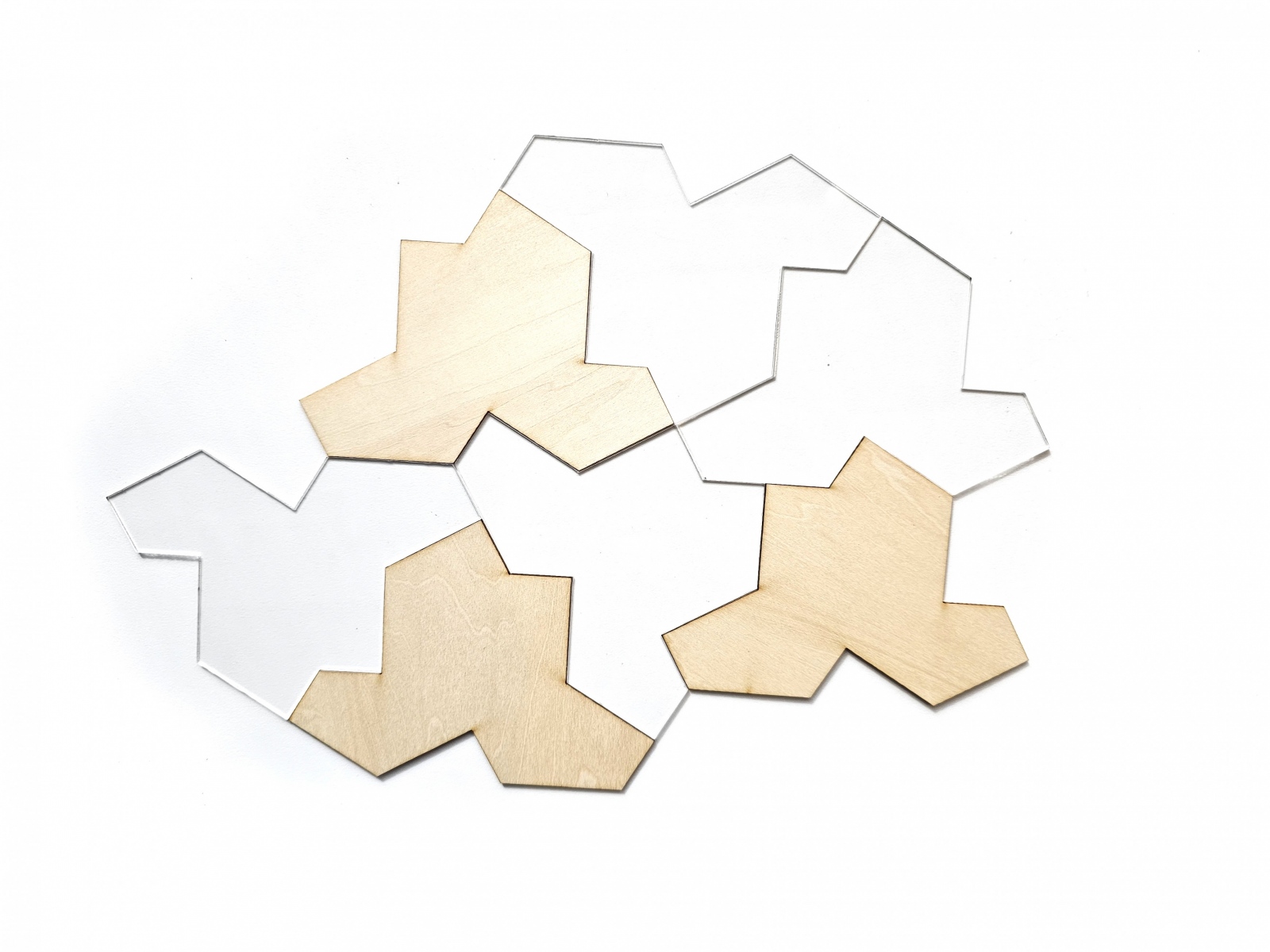Take a look at this newly discovered 13-sided shape called “the hat”! The first “Einstein” shape of its kind, it can completely cover a surface without creating any recognizable repeating cluster pattern.
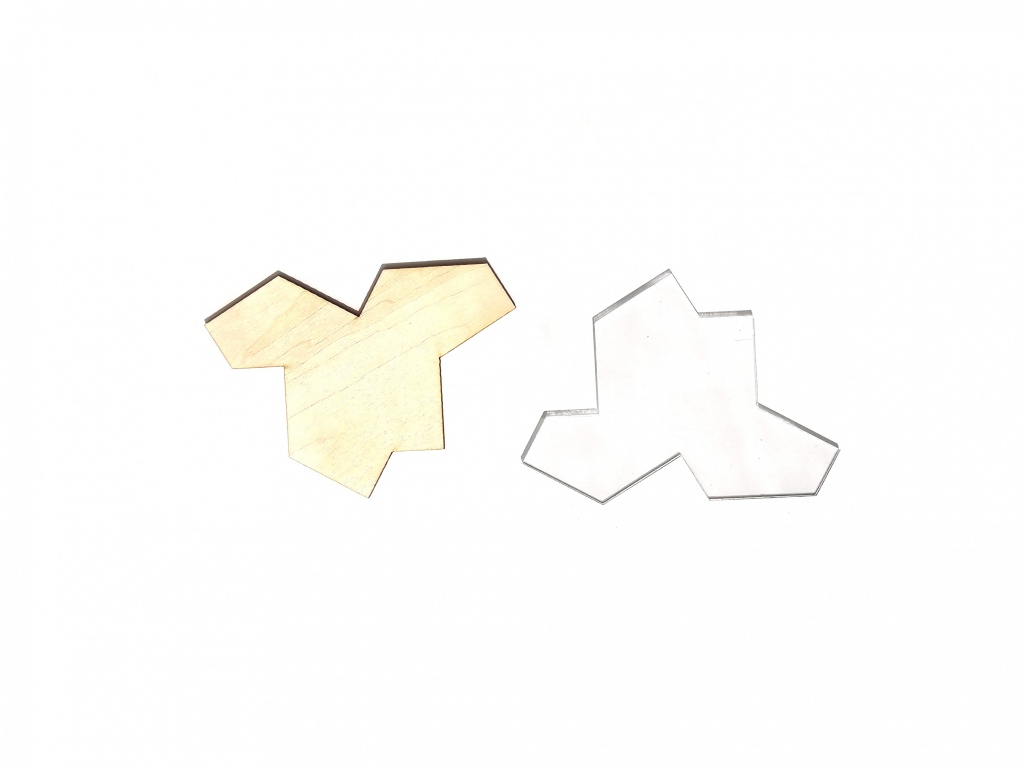
Discovered by retired printing technician David Smith, alongside a team of mathematicians, this new shape, along with its sequel, “the turtle”, are aperiodic shapes that have been made publicly available to anyone to use in any kind of architectural, decorative and artistic content. Though aperiodic tilings as a group of shapes had been found before, this was the first individual tile to be confirmed. Now that the method of deriving one of these ‘Eureka’ tiles has been established, it can mean that there is potential for several other similar aperiodic shapes to be identified in the future!
Inspired by this recent discovery and its potential for new tiling applications, the Brandeis and Tulane project teams have started experimenting with “the hat” and are looking to integrate this shape and its implications into current and future work. Some potential applications include becoming interactive fabrication pieces to tile a feature wall, or to denote effect on various wayfinding signs.
Currently, the team is looking at different materials to examine how it can differentiate the non-repeating pattern clusters. By altering the transparencies, colors, or even something more subtle such as etchings on the pieces themselves, the tiles could lend themselves to more engaging applications.
If you would like more information regarding the shape and its discovery, or the links to the publicly available shape files, check out this article!

